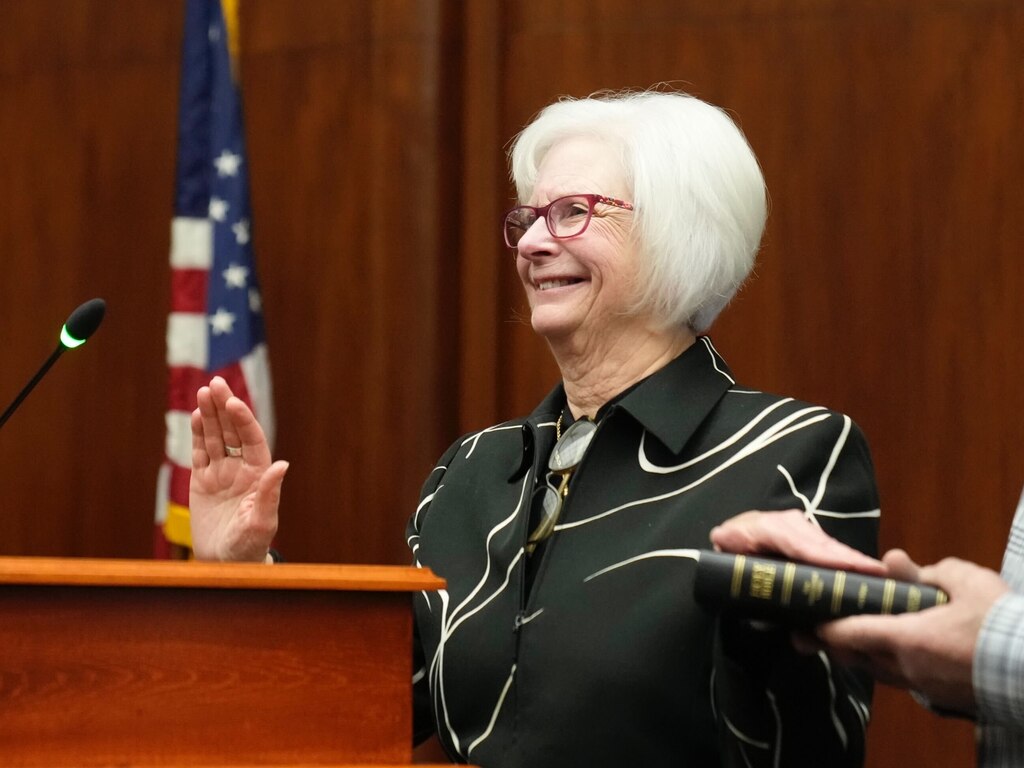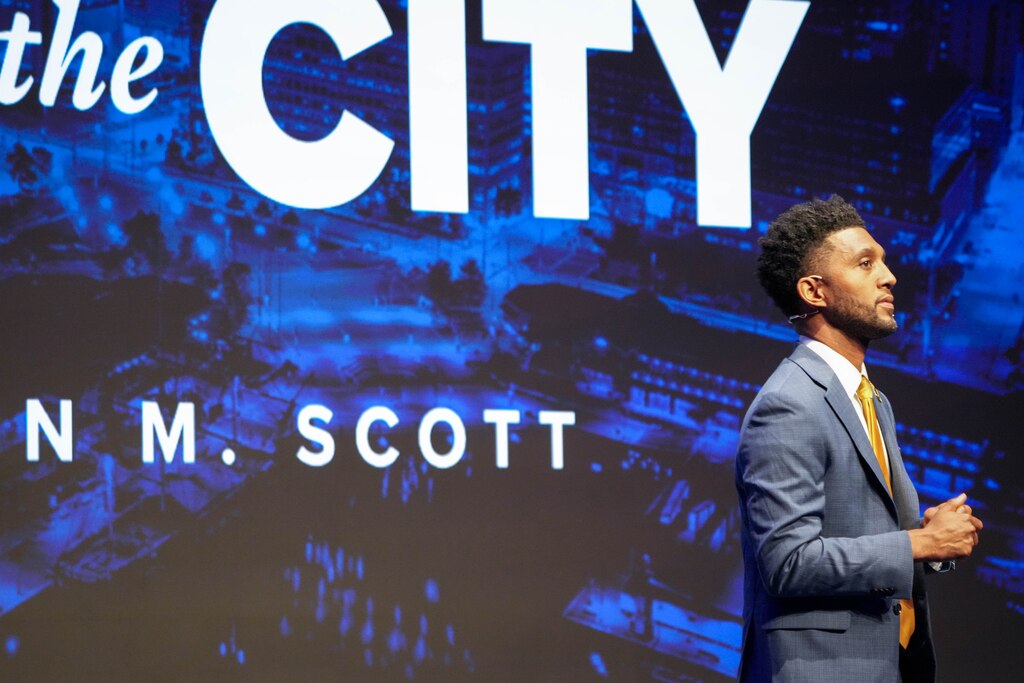Right now, a few dozen elected officials are making decisions for more than 4 million Marylanders, two-thirds of the state population.
Leaders of the big six — Baltimore City and Montgomery, Prince George’s, Baltimore, Anne Arundel and Howard counties — have to sort out paying for schools, public safety and prosperity while keeping taxes low(ish).
They share some villains. A federal government remaking America to the executive whims of President Donald Trump and a strapped state government passing down more of its expenses.
“It is often said that budgets reflect values and they do, but county budgets also reflect what‘s happening at the state, the nation and in the world,” said Steuart Pittman, Anne Arundel County executive. “So we are in a defensive posture. Direct and cruel attacks are being launched every day by the federal government.”
Priorities can be endearingly specific. Local government quirks, puzzling to an outsider, are familiar only to those who know about things like neighborhood containers set up for really big trash.
“When I first got here, the word was that we weren’t having dumpsters anymore,” said Baltimore County Katherine A. Klausmeier, who was appointed county executive in January after Johnny Olszewski Jr. was elected to Congress. “And within 24½ hours, we had dumpsters again.”

I’ve spent hours watching Pittman, Klausmeier and the other big six leaders — all Democrats — introducing their budgets.
The speeches can be mundane and jargon-laden. Some rebrand them as “State of the County” addresses to up the interest. With modest changes by legislators, they dictate where the bulk of Maryland taxpayers’ money will go.
“These things are not quite as big as the State of the Union for national government or the State of the [State] for the governor,” said Marc Elrich, the Montgomery County executive. “But they are a statement about where we are and where we’re trying to go.”
And it is a lot of money, almost $28 billion, to be spent on county programs that often impact daily lives more than state spending.
The form can be ridiculously self-congratulatory. Rooms filled with paid staff members, friends and family. There are over-the-top introductions, like the one for Elrich by Chief Administrative Officer Richard Madaleno.
“My friend, my boss, our county executive,” he said.
They can play down the difficult.
Elrich called on the state to give him authority to raise commercial property taxes for infrastructure projects, but didn’t mention his plan to raise income taxes for the first time in more than 20 years.
Among Baltimore Mayor Brandon Scott‘s unchallenged litany of successes, he listed a drop in Baltimore overdoses. He ignored the fentanyl crisis among older Black men revealed by The Baltimore Banner’s Pulitzer Prize-winning investigation.
Taxes, not surprisingly, are among the most sensitive of topics. No counties raised property tax rates this year, but phone taxes in Prince George’s County will be rising, along with income taxes in Montgomery County.
County executives who didn’t have to raise taxes to pay the bills bragged about it.
“We grew our economy, budgeted responsibly, taxed progressively and now find ourselves able to protect our people from the worst of the federal impacts while keeping our taxes the lowest in central Maryland,” Pittman said.

Others seem offended by the mere idea that taxes might rise.
“This is your money,” Klausmeier said. “We are neighbors and our local government will not be frivolous with your money.”
Here’s a secret. Your property tax bill, calculated by the tax rate multiplied by every $100 of its assessed value, goes up as your home increases in value.
“I’m happy to announce that by 2028, we will bring residential property tax rates under $2 in Baltimore,” Scott said. “They haven’t been that low in 50 years.”
Every budget pours half its dollars into schools, and school officials say it‘s never enough.
“Our top priority in the FY26 budget was to direct significant resources to the Howard County public school system to support our unparalleled education system,” County Executive Calvin Ball said.
Others complained that the state’s Blueprint for Maryland‘s Future is forcing them to pay more.
“We are committed to providing high-quality education for our children, but we also maintain our position that the program costs are not sustainable long-term,” said Tara Jackson, who was named acting Prince George’s County executive after her predecessor, Angela Alsobrooks, was elected to the U.S. Senate. “Something must be done to help pay for the program.”
There are affordable housing programs. There are economic development goals. Elrich tied his to expanding transit.
Each executive’s style says a lot about local political culture and individual ambition. Ball, whose speech was the lowest of low-keys, delighted in the wonky — “pay go,” “maintenance of effort” and the dreaded “pension liability costs.”
Of the six executives, five can’t or won’t continue doing this after 2028.
If Scott is the exception, his gala presentation at the France-Merrick Performing Arts Center should leave little doubt that he wants to be the city’s first three-term mayor since Kurt Schmoke.

It was masterful political theater, mixing video stories with warm shout-outs to the stars after the credits rolled. The mayor prowled the stage in making his point, calling out allies in meeting his goals.
His talk was filled with snappy new program names and slogans, from “Frame Baltimore” to “Baltimore is built different, so we have to build different.”
City officials have yet to say how much his show cost.
Others had slogans too, just not ones that always worked.
“Baltimore County: Moving forward is more than a metaphor,” Klausmeier said.
If nothing else, these speeches offer a sense of identity. The top elected officials represent their constituents in more ways than just budgets.
It‘s not only about where they’re going, but where they’re from.
“Everyone that knows me knows that no matter what anyone may think about me, the one constant is that I am Baltimore to the core,” Scott said. “Yes, sir.”
Or as Klausmeier pronounced it, “Bald‘mur.”





Comments
Welcome to The Banner's subscriber-only commenting community. Please review our community guidelines.